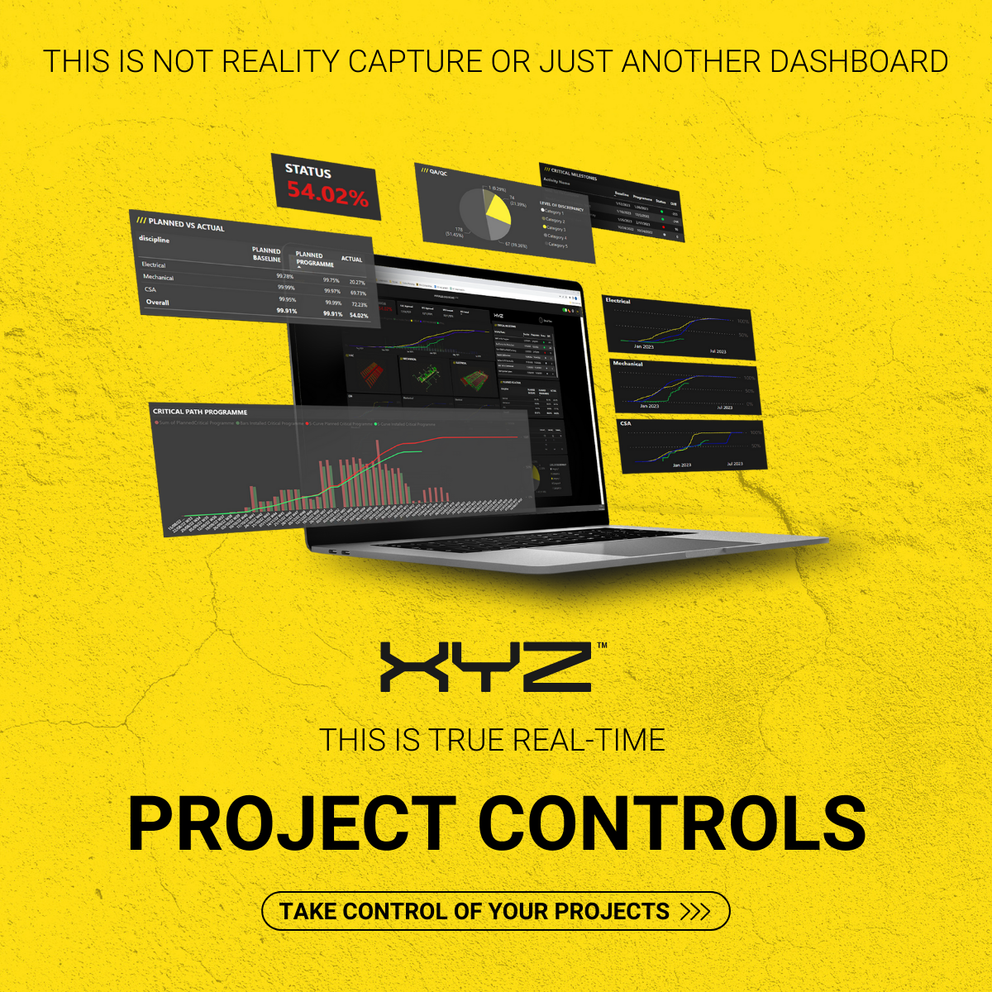-
Services
Services
Find out how we work with our clients and deliver value to construction projects from day one
-
Solutions
Solutions
Discover how all our solutions sync together to deliver construction's most powerful BIM platform to date
-
Built for
Built for
-
Industry
Industry
Understand how we support construction's biggest sectors, and hear from our clients who have experienced the power of XYZ
-
Resources
Resources
Get stuck into all our latest thought leadership, news, reports and industry leading content
-
Company
Company
Dive into what makes XYZ tick, unearth why construction is in our DNA and why we are world leaders in AR solutions

Insights
7 Reasons Rework Still Drains Construction Budgets
21 July 2025
Let’s be honest – this industry has a rework problem.
I’ve been deep in mission-critical projects for a while, and the story doesn’t change: schedules slip, QA happens too late, and avoidable mistakes end up costing millions.
Globally, rework eats up over $625 billion a year. That’s not just frustrating – it’s unsustainable.
Here’s what I’ve learned from the field: if we want to build faster and better, we can’t keep fixing things after the fact. We need to start thinking differently about risk, quality, and the tools we’re using to deliver.
These are the seven biggest culprits I see over and over again – and what we need to start doing about them.
1. QA Still Happens After the Damage Is Done
Most QA processes kick in after something’s already installed. By then, the risk has matured, the mistake is locked in, and fixing it means disruption.
On high-stakes projects like hyperscale data centers, I’ve seen entire trades forced to stand down while a wall gets opened back up. That shouldn’t be normal.
What needs to change: QA should happen before, during and after installation, not just after. We need tools that let teams validate their work in real time – and adjust before they cause delays downstream.
2. Layout Is Still Manual (And That’s a Problem)
We’re still relying on tape measures, chalk lines, and assumptions to position critical systems. On one project, that meant hundreds of Unistruts laid out wrong, with days of rework required just to reset.
What needs to change: Layout should be directly tied to the BIM – no guessing, no redrawing. When teams can see the model overlaid on the actual environment, accuracy goes through the roof. I’ve seen layout time drop by 85% when we do it this way.
3. The Field Doesn’t Always Trust the Model
And honestly, I don’t blame them. If you’re holding a paper drawing that doesn’t reflect a design change from three days ago, you’re going to make a judgment call – and that’s where risk creeps in.
What needs to change: The model needs to be live, accessible, and aligned with install. When the field can trust what they’re building from, you reduce the friction and the finger-pointing.
4. We’re Still Measuring Progress by Walking the Site
This one drives me nuts. You can’t manage what you can’t measure, and "walking it" isn’t a measurement. I've had projects where the schedule looked fine on paper – until we put actual data to it and saw we were weeks behind. If you're used to seeing your project health go from green to red, without hitting amber, you'll know exactly what I mean.
What needs to change: Progress tracking should be objective, live, and tied to physical verification. If your data’s a week old, so is your response.
5. Rework Isn’t Just a Cost – It’s a Culture Killer
Every time we go back and fix something, morale takes a hit. Crews lose momentum. Trust between trades erodes. And in mission-critical, where tight tolerances and fast sequencing are the norm, that has real consequences.
What needs to change: We need to build in a way that promotes confidence – not catch-up. That means building it right, first time, consistently.
6. We Treat Mistakes Like Surprises (When They're Not)
Here’s the truth: most issues aren’t surprises. They’re the result of missed communication, delayed validation, or relying on "we’ve always done it this way."
What needs to change: Predictability needs to be designed into the process. Real-time validation, early clash detection, and shared visibility reduce “surprises” to manageable adjustments – not disasters.
7. We're Still Reacting, Not Leading
We’re surrounded by smart people, incredible technology, and high-value projects. But we’re still relying on reactive workflows and outdated tools to manage them.
What needs to change: We need to shift from reactive to proactive – from hoping things go right to knowing they will. That’s the mindset shift that’s going to separate the next generation of builders from the rest.
Final Thoughts
If you’ve made it this far, you probably feel the same tension I do. We know what excellence looks like – but the systems we rely on aren’t always built to support it.
Businesses either innovate or die. Just look at what happened to Nokia, Blockbuster, or Blackberry. Construction technology has advanced more in the last four years than it has in the last twenty – yet 99% of project sites are still building the same way the Egyptians built the Pyramids: using 2D drawings.
Here’s the good news: we don’t have to settle. I’ve seen firsthand how introducing real-time validation, AR-driven layout, and objective progress tracking changes the game. It’s not about tech for tech’s sake. It’s about protecting the schedule, the budget, and the people building it.
We’re not here to patch problems. We’re here to prevent them.
If you’re working on a high-stakes build and want to chat more about how to reduce rework – feel free to reach out. Always happy to talk.








